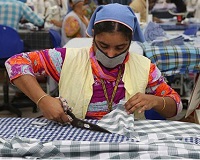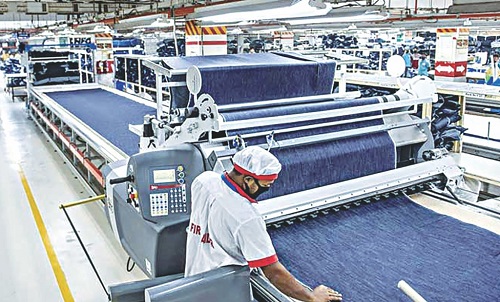"The series of upheavals currently being witnessed in the Bangladesh RMG industry such as robotics, automation, machine learning, and artificial intelligence are negatively affecting the country’s job market and its economy. The introduction of new production machinery is affecting unskilled and semi-skilled workers in the country. The Bangladesh government’s a2i project and the International Labour Organisation (ILO) reveals, around 60 percent of garment workers in the country are likely to become unemployed by 2030 and be replaced by robots due to automation in the RMG sector."
 The series of upheavals currently being witnessed in the Bangladesh RMG industry such as robotics, automation, machine learning, and artificial intelligence are negatively affecting the country’s job market and its economy. The introduction of new production machinery is affecting unskilled and semi-skilled workers in the country. The Bangladesh government’s a2i project and the International Labour Organisation (ILO) reveals, around 60 percent of garment workers in the country are likely to become unemployed by 2030 and be replaced by robots due to automation in the RMG sector.
The series of upheavals currently being witnessed in the Bangladesh RMG industry such as robotics, automation, machine learning, and artificial intelligence are negatively affecting the country’s job market and its economy. The introduction of new production machinery is affecting unskilled and semi-skilled workers in the country. The Bangladesh government’s a2i project and the International Labour Organisation (ILO) reveals, around 60 percent of garment workers in the country are likely to become unemployed by 2030 and be replaced by robots due to automation in the RMG sector.
Though the garment sector has created numerous jobs in Bangladesh, a large portion of this labor is unskilled. Automation is likely to impact workers adversely as they are likely to lose their jobs. Though Bangladesh is the second largest garment and textile exporter in the world, it cannot create sufficient jobs for the workers leading to the probability of mass unemployment in the country.
Factory owners integrating new machines in factories
Garment unit owners are now integrating automatic machinery in their factories which enables them to overcome the challenges across their production process. They have introduced automation at almost all stages of apparel making which has, in turn, reduced their dependency on labor.
introduced automation at almost all stages of apparel making which has, in turn, reduced their dependency on labor.
The Bangladesh Garments Accessories aAnd Packaging Manufacturers and Exporters’ Association (BGAPMEA) reveals that every year around 100 new factories now use advanced technologies in their entire apparel-making process. The use of these advanced technologies enables them to cut their production costs significantly besides ensuring higher productivity and reduced lead times. Though, the introduction and use of automatic machinery in the RMG sector is costly it will help the sector reap benefits in the long run in terms of higher efficiency.
Negative impact on employment market
Though automation in the RMG sector is likely to bring in some inevitable challenges for Bangladesh, the country has no other option but to embrace them in order to take the apparel sector to the next level. Automation in the country will definitely lead to layoffs and job cuts, but it will also create new jobs as the new installed machines will require supervision and experience wear and tear, on the other. The type of jobs created as a result of automation will require skill and education—which the country lacks.
Skill development to ensure job retention
Automation will create more jobs in the service sector for which they need to invest more in education and training. Furthermore, it needs to ensure favorable labor laws, take initiatives for skills development, and provide social protection. There is a dire need for training for developing and expanding labor market skills to ensure job retention and assist terminated workers to find alternative ways to make a living.
Restructuring the country’s education system and reducing the gap between its education and employment will reduce its dependence on expatriate managers and curb youth unemployment. The government must therefore prepare its labor force for the smooth transition of its RMG industry to a higher value added industry.












